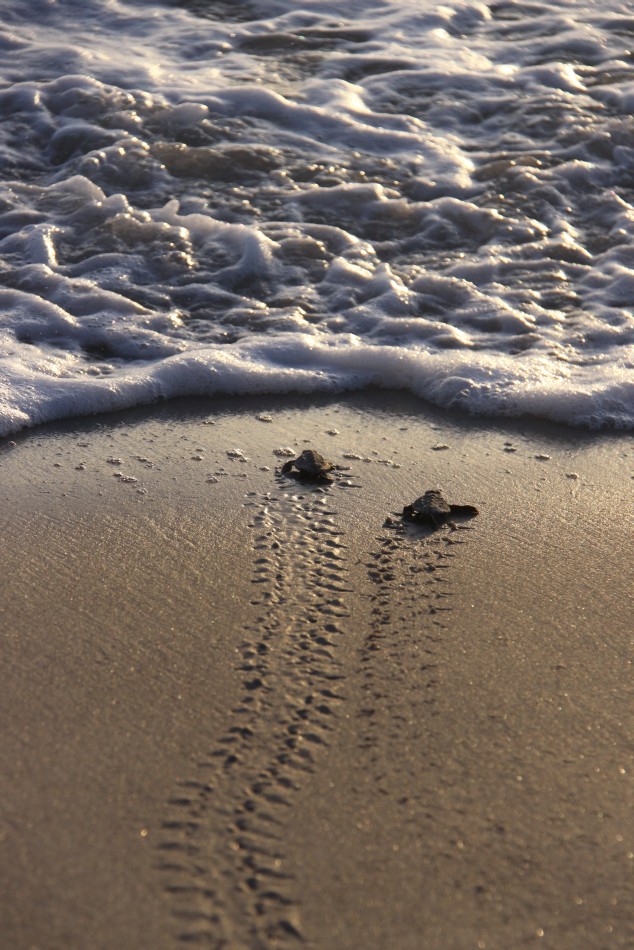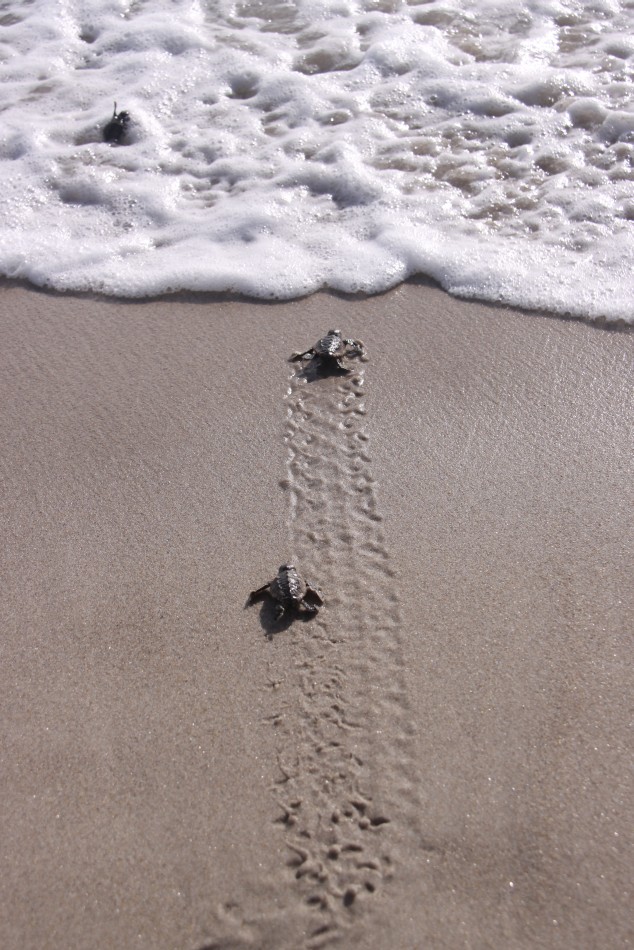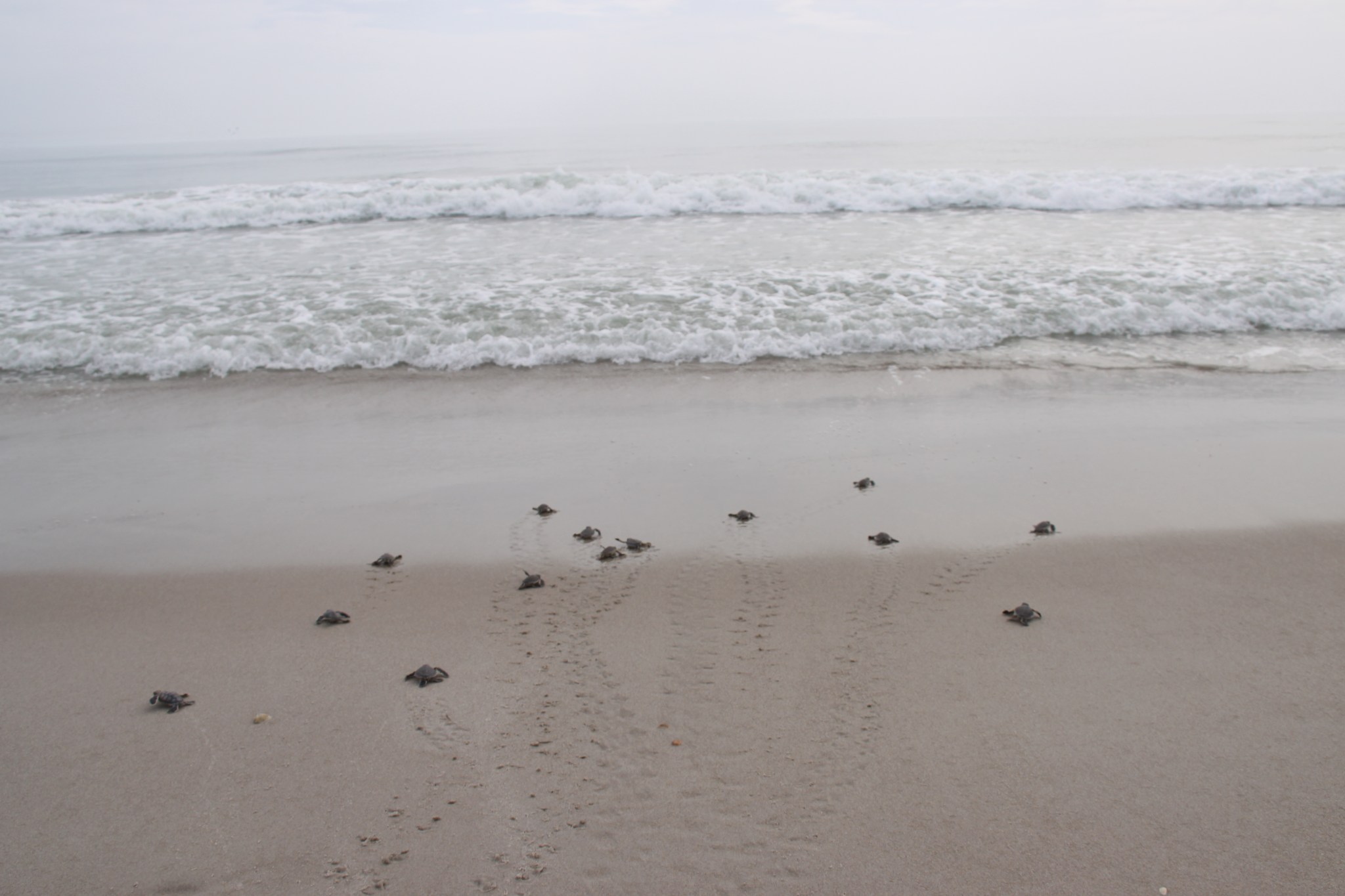Editor’s note: The headline and story were changed to reflect a record number of nests, not hatches, on Kennedy.
Humans aren’t the only living creatures using NASA’s Kennedy Space Center as their launchpad to the future. This year, a record number of sea turtle nests were built on the undisturbed beaches of the Florida spaceport.
Biologists counted 13,935 sea turtle nests along Kennedy’s shoreline during the 2023 nesting season, 639 more nests than 2022 and the most found on center in a single year since record-keeping began in 1984. All of those sea turtle nests belong to species identified by the U.S. National Park Service as endangered or threatened, including the green (Chelonia mydas) and loggerhead (Caretta caretta).
“All our effort to protect Kennedy’s habitat is bearing fruit,” said NASA Environmental Protection Specialist Jeff Collins. “Kennedy’s use of turtle-friendly lighting and having a properly maintained dune helps to keep our beach dark and that really makes a difference to sea turtle nesting success.”
NASA partners to preserve the turtles and other fauna and flora at the spaceport with the Merritt Island National Wildlife Refuge and Canaveral National Seashore, which share a boundary with Kennedy. Working together, biologists found more than 8,800 nests at Kennedy this year were made by greens, with loggerheads creating almost 5,100.
“Kennedy’s sea turtle nests usually make up around 10% of the number Florida Fish and Wildlife reports in any given year,” said United States Fish and Wildlife Service Biologist Michael Legare. “Brevard, the Florida county where Kennedy is located, is particularly important to the future of loggerheads. That county and five others nearby – Indian River, St. Lucie, Martin, Palm Beach, and Broward – usually report around 80% of all loggerhead nests yearly in the Sunshine State.”
Florida normally sees between 40,000 to 84,000 sea turtle nests built annually, according to state Fish and Wildlife data.
From the beginning of March through the end of October, the sand on Kennedy’s beaches is marked with the tracks of adult sea turtles as they emerge from the sea and make their way to where they lay their eggs. If all goes well, much smaller sand tracks follow months later when the hatchlings leave their nests and head to the sea, assuming they have the proper guidance to get there.
“Giving the sea turtles, especially the hatchlings, nothing but the moon and stars to shine their path to the ocean is one big way humans can help them,” Collins said. “Any other light can disorient them enough to where they’ll never find the ocean, making them easy prey while leading them away from the food and water they need to survive.”
That is why closing window blinds or removing artificial beach lights are also important for shoreline buildings. “If the lights have to stay, then it’s essential that the bulbs be dimmed or replaced with amber or low wave-length lighting. Such simple things can make the difference between life and death for the turtles,” Legare said.
This year’s count includes 26 leatherback (Dermochelys coriacea) nests and one Kemp’s ridley (Lepidochelys kempii) nest, one of the world’s most endangered sea turtle species. There were no hawksbill (Eretmochelys imbricata) nests discovered this season at Kennedy. Like the Kemp’s ridley, the endangered hawksbill has been documented at Kennedy in the past, but both species are a rare sight on the spaceport’s beaches.
The leatherback, the largest of the sea turtle species that regularly nests at Kennedy, is normally among the first to lay their eggs in March. If any Kemp’s ridley or hawksbills come on shore to build their nests, that usually starts a month or so after the leatherbacks. Greens and loggerheads, the more common sea turtle species at Kennedy, often start nesting in late spring and continue through the summer months into fall.
The number of eggs in each nest and how many of them hatch successfully aren’t tracked by state biologists, but on average, greens lay around 110 per nest, with loggerheads (100) and leatherbacks (80) close behind. Hawksbills lay around 160 eggs per nest on average, while Kemp’s ridley average around 100 per nest.
It generally takes around two months for the sea turtle babies to emerge from their nest once the eggs are inside, but that can vary depending on the species. Sand temperature also plays a big role in determining the sex of the new turtles. Cooler temperatures produce more males and warmer temperatures bring more females.
Florida Fish and Wildlife data shows about one of every 1,000 baby turtles makes it to adulthood.
“The continued success of sea turtle nests at Kennedy shows that it is possible to explore space while maintaining the ecosystem,” Collins said. “As the spaceport’s launch cadence grows, we will continue our efforts to preserve that balance into the future.”





























